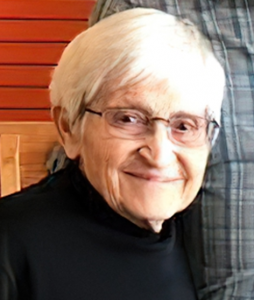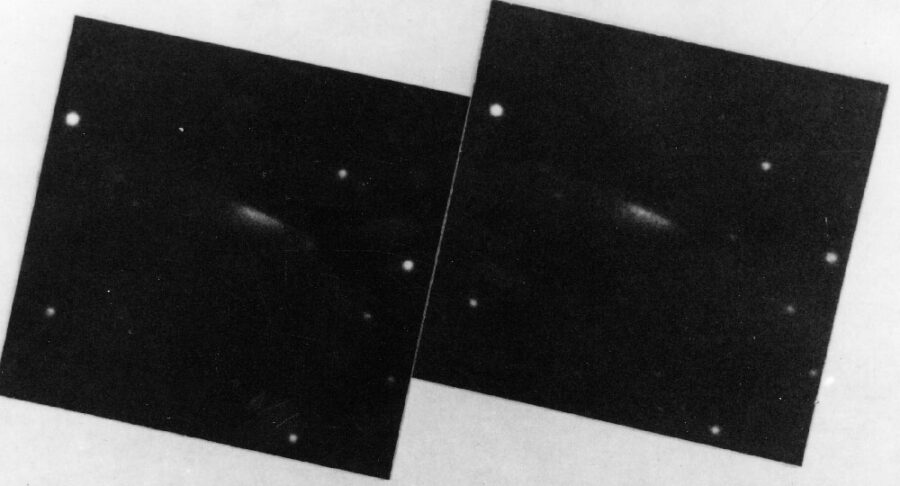31.08.2021
A woman who once had no interest in science went on to find more than 800 asteroids and 32 comets, including one of the most famous comets of the 20th century.

More important than its scientific value, Carolyn Shoemaker believed that a long-term project wasn’t worth doing unless it was fun.
Certainly, this powerful idea held true for her longest and most ambitious project, the Palomar Asteroid and Comet Survey — which led to her discoveries of hundreds of asteroids and 32 comets, including most spectacularly Comet Shoemaker-Levy 9. When that comet collided with Jupiter in the summer of 1994, it marked the most astonishing collision in the solar system ever witnessed by humans. It was quite an accomplishment for Carolyn, who died on August 13th this year at the age of 92.
I had the great privilege of knowing Carolyn for more than three decades. In 1989, Carolyn invited me to join her for a two-night observing run at Palomar Mountain’s oldest telescope, the 18-inch Schmidt camera. The instrument was the first Schmidt camera ever used in the United States, and my first night with it was rather difficult, as I did not know much about how the camera was supposed to operate. By the second night, however, the observations were moving along quite well. “We may even run out of film,” Carolyn suggested. “We didn’t expect to be moving this efficiently.”
When I brought up the next film holder with its large piece of Kodak 4416 hypersensitized film, I told her that this would be the last film. However, I added that I had brought along some spare rolls of ordinary 35-mm black-and-white film. I could cut them into pieces to form the circular shape of the large pieces of film, I said, then Scotch-tape them together to fit them into the large film holder.
How am I going to tell this enthusiastic person, Carolyn thought to herself, that his idea is stupid and worthless?
“David, it’s not going to work,” she said.
Not quite ready to give up on the joke, I added, “We simply take a gigantic pair of scissors, with a curve in them, to cut the strips of film.”
Carolyn looked up for a moment, then said, “David, I have the feeling that I’ve just been had.”
“That might just be because,” I admitted, “you’ve just been had.”
At that instant, a long and close friendship began that would stretch on for more than 30 years.
A LATECOMER TO ASTRONOMY
Carolyn Jean Spellmann was born on June 24, 1929, in Gallup, New Mexico. She grew up in Chico, California, and attended what is now California State University, Chico. She had no interest in science and indeed found her geology course boring and frustrating.
After her brother Richard graduated from Caltech in 1948, Carolyn’s mother tried to act as matchmaker for her and Richard’s roommate, a young geologist named Gene Shoemaker. Carolyn resisted this effort, and did again when Gene served as best man at Richard’s wedding two years later. Richard had to bribe her to spend time with Gene at the wedding by offering to give her a tablecloth from Guatemala.
The bribe paid off: Richard’s wedding led to various dates between Carolyn and Gene, including camping and geological field trips, and ultimately a 1951 wedding. On a field trip with Gene during the summer of 1952, just after their marriage, Gene gave Carolyn a new experience with geology. Carolyn was enthralled by how Gene brought geology to life. Gene was passionate about Earth as a world, with its long and beautiful history carefully written in pages of rock. “It was a great way to get to know each other,” Carolyn recalled of that summer. She added that she thought that the best way to get to know another person is to go camping or observing with them. I would learn to appreciate this wisdom during our years of observing together.
Carolyn began her married life as a school teacher, but she found that profession tedious. While her husband trained astronauts to conduct geology experiments during their field trips on the Moon, Carolyn raised the couple’s three children Christy, Linda, and Pat.
As the children grew older, Carolyn was left with an uncertain future. Gene suggested that she join his new program to search asteroids that could pose a threat to Earth. Besides the 18-inch Schmidt telescope, their instrument of choice was a stereomicroscope through which Carolyn could view two pieces of film at the same time. With both exposures recording identical parts of the sky, her eyes would apparently see just one image. But if an object were to move in the sky between one exposure and the next, it would appear to “float” atop the background of stars. Carolyn quickly became an expert at finding moving asteroids and soon began to discover asteroids on her own.
In October 1983, Carolyn discovered her first comet. She contacted Brian Marsden, then director of the Central Bureau for Astronomical Telegrams. Brian carefully walked her through the process, recording the discovery positions. Then he asked Carolyn what the magnitude of the comet was.
“I have no idea!” Carolyn said tensely.
Brian’s response: “I don’t care; say anything!"
Thus, IAU Circular 3863, issued on September 14, 1983, announced the discovery of 16th-magnitude Comet Shoemaker.
In the following years Carolyn found comet after comet, and by the time I began observing with her and Gene, she had discovered 17. In 1990, after more than a year of our observing together, periodic comet Shoemaker-Levy 1 turned up. Seven more came in 1991. There were not so many in 1992 or 1993, though one discovery made up for all that: Shoemaker-Levy 9.


NASA / ESA / H. Weaver and E. Smith (STScI)
Carolyn’s hard work brought several accolades. She and Gene shared both the Rittenhouse Medal in 1988 and the Scientists of the Year Award in 1995. In 1990 she received an honorary doctorate from Northern Arizona University, Flagstaff, and the NASA Exceptional Scientific Achievement Medal came in 1996.
There were also some unhappy times in Carolyn’s long life, particularly after Gene died in a car accident in Australia in 1997. Carolyn survived the accident with severe injuries, but she never really recovered from the loss of her husband. At one point, she confided to me that she wished she had died with him.
The entire observing experience, whether Carolyn found anything or not, was the real joy of the many years Carolyn spent under the stars, whether with Gene at Palomar or, later, with Wendee and me in southern Arizona.
On one of those nights, I stepped out to check the condition of the sky and saw four auroral rays climbing from the northern horizon. At Palomar’s latitude of 33.3° north, seeing any aurorae at all is an extremely rare treat. I rushed in and informed Carolyn. She halted our observing and insisted that Gene join us outside to enjoy the wondrous view of the northern lights. For Carolyn, the shimmering rays reminded us of why she loved the night sky and the majesty of searching it at one of the world’s great observatories.
Quelle: Sky&Telescope
